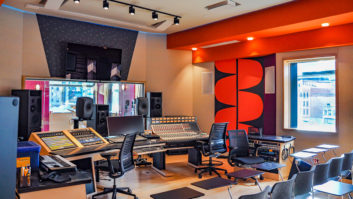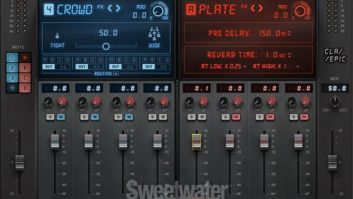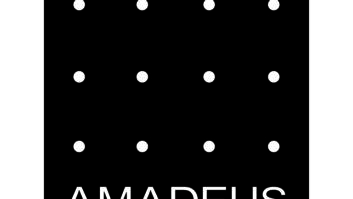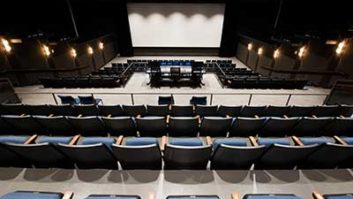
Roger Arnold demonstrates a minimalist
miking technique for drums using
Studio Projects microphones.
New Haven, CT (October 23, 2008)–As an independent recording engineer and instructor/professional-in-residence in the Visual and Performing Arts Dept. at the University of New Haven, Roger Arnold has plenty of opportunities to dig into his own kit of Studio Project mics, as well the school’s mics.
“When we were looking for some microphones for the school,” says Arnold, “we didn’t have any multi-pattern condensers that I could use to teach various stereo miking techniques. We found that Studio Projects mics–the C3 and even the B3 [both switchable among cardioid, omni, and figure-eight]–were perfectly capable of handling anything that a much more expensive competitive product could handle.”
Arnold teaches two Recording Seminar classes per semester with a total of 30 students, all seniors. In a recent classroom session, he demonstrated a “minimalist” approach to students for miking a drum kit, using a pair of CS5s (in super cardioid mode, in order to capture some of the room, he says), and a T3 Tube (in wide cardioid mode, to get a little more of the tom sound) in front of the kick.
“This was sort of the opposite of the approach that I would take to mic a drum kit,” he says, laughing. “But honestly, I was blown away by the T3 on the kick, even from that short a distance. And even though this is not the best sounding room for drums, the CS5s were able to put a little space behind the kit.”
Earlier in the week, Arnold used the Studio Projects CS5 as a vocal mic in a session at The Wimbish Ranch (New Britain, CT), with a Joemeek Twin Q processor.
Arnold also teaches Acoustics and Critical Listening, Microphone Design and Placement, Live Sound, and Digital Audio Workstations Operation and Installation.
Studio Projects
www.studioprojects.com
Roger Arnold
www.reaengineering.com





